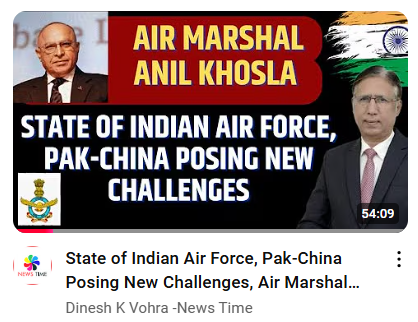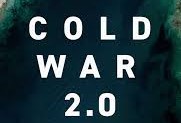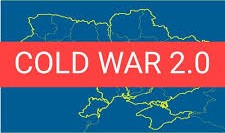
Pic Courtesy Net
My Article published on the Life of Soldier website on 29 Jan 25
The global defence landscape is transforming significantly, driven by technological advancements, shifting geopolitical dynamics, and evolving security threats. Nations increasingly prioritise developing cutting-edge technologies such as hypersonic missiles, artificial intelligence, and quantum radar to enhance military capabilities. The rise of non-traditional threats, including cyber-attacks and space-based warfare, also reshapes defence strategies. As countries adjust to these changes, the winds of change in global defence are prompting nations to rethink military priorities, strategies, and international relations. The winds of change in global defence are characterised by rising defence spending and a shift toward advanced military technologies. Countries are increasing their military budgets in response to escalating geopolitical tensions and emerging threats. This surge in defence spending reflects a global shift toward preparedness, emphasising modernisation, strategic alliances, and a more proactive approach to defence.
New Weapons and Dimensions of Warfare
AI-Powered Autonomous Weapons. The first fully autonomous AI-controlled weapon systems have been deployed in active combat zones. The deployment of AI-powered autonomous weapons in active combat zones marks a significant leap in military technology, raising concerns over their implications for global security. These systems, capable of making real-time decisions without human intervention, are being tested in conflicts such as those in the Middle East and Eastern Europe. While proponents argue they enhance precision and reduce human casualties, critics fear they could lead to uncontrolled escalation, with machines making life-and-death decisions. Ethical dilemmas arise over accountability for actions taken by autonomous systems, and there are growing calls for international regulations to govern the development and use of such advanced weapons.
Intensification of the Hypersonic Missile Arms Race. The hypersonic missile arms race has intensified as countries like the United States, China, and Russia race to develop advanced, high-speed weaponry capable of travelling at speeds greater than five times the speed of sound. These missiles can manoeuvre unpredictably, making them difficult to intercept with existing defence systems. This technological leap raises concerns about the potential for destabilising global security as nations vie for strategic advantage in an increasingly competitive and unpredictable arms race. The growing development and testing of hypersonic missiles signal a new era in military warfare, potentially altering the balance of power and escalation risks worldwide.
Cyber Attacks on Critical Infrastructure. Cyber attacks on critical infrastructure have become a growing threat to national security and economic stability. These attacks target essential sectors such as energy, transportation, finance, and healthcare, aiming to disrupt operations, steal sensitive data, or cause widespread damage. Notable incidents, including the 2021 Colonial Pipeline attack in the U.S. and various ransomware campaigns, highlight vulnerabilities in critical systems. As cyber warfare becomes an increasingly prominent tactic, governments and organisations are prioritising cyber security measures and investing in advanced technologies to prevent, detect, and mitigate such threats. These attacks’ rising frequency and sophistication emphasise the urgent need for robust cyber defence strategies globally.
Militarisation of Space. Space-based weapons systems are emerging as a new frontier in global defence. Several countries (the U.S., China, India, and France) have unveiled plans for orbital weapons platforms, signalling the militarisation of space and threatening existing space treaties to prevent such developments. These systems, which include anti-satellite missiles, directed energy weapons, and satellite-based lasers, are designed to target and neutralise adversary satellites or other space assets. The growing militarisation of space raises concerns over the potential for conflict beyond Earth’s atmosphere as nations seek to secure space-based resources and gain strategic advantage. The development of space-based weapons could disrupt communications, navigation, and surveillance capabilities, escalating tensions and prompting calls for international regulation of space militarisation.
Quantum Radar Military Breakthrough. Quantum radar represents a ground-breaking military technology with the potential to revolutionise defence systems. Unlike conventional radar, which relies on radio waves, quantum radar uses quantum entanglement to detect objects with unprecedented accuracy. This technology can potentially detect stealth aircraft and missiles, which are designed to evade traditional radar. By exploiting the quantum properties of light, quantum radar can function in environments where traditional systems struggle, such as in electronic warfare scenarios. As nations like China and the United States race to develop quantum radar, it could significantly alter the balance of military power, enhancing defence capabilities and complicating interception strategies. China has announced the development of quantum radar technology, which has the potential to render stealth aircraft obsolete and revolutionise detection capabilities in military operations.
Research on Genetic Bioweapons. Leaked documents have revealed ongoing research into genetic-based bioweapons, heightening fears of engineered pandemics and the ethical implications of such advancements. Research on genetic bioweapons has raised significant concerns over the moral, legal, and security implications of manipulating biological agents for warfare. Advances in genetic engineering, particularly CRISPR technology (Clustered Regularly Interspaced Short Palindromic Repeats enable precise editing of genes), have made it possible to modify pathogens, potentially creating more lethal or targeted biological weapons. The idea of designing diseases that could specifically target specific populations based on genetic markers adds a disturbing dimension to bioweapons research. Although international treaties like the Biological Weapons Convention aim to prevent such developments, the growing accessibility of genetic technologies makes the risk of bioengineered weapons a pressing global concern, necessitating stronger regulations and monitoring.
Successful Test of EMP Weapons. Successful electromagnetic pulse (EMP) weapons tests have raised alarms about the potential impact on global security. EMP weapons generate intense bursts of electromagnetic radiation capable of disabling electronic systems, including power grids, communication networks, and military technologies. In recent tests, countries like the United States, China, and Russia have demonstrated the destructive potential of EMPs, which could paralyse critical infrastructure on a large scale. While EMP weapons are seen as strategic tools for disrupting adversaries, their use also carries significant risks of unintended global consequences, including widespread civilian suffering and the collapse of essential services.
Devastating Swarm Drones. Swarm drones, groups of autonomous or semi-autonomous drones operating in coordination, are emerging as a devastating new tool in modern air warfare. These drones can be deployed in large numbers, overwhelming enemy defences with precision strikes and creating significant disruption. Equipped with advanced sensors and artificial intelligence, swarm drones can navigate complex environments, target multiple objectives simultaneously, and adapt to changing conditions. Their use in military conflicts has raised concerns about their potential for widespread destruction, especially when used for surveillance, sabotage, or large-scale attacks. As drone technology evolves, swarm drones are expected to become a significant threat to global security.
Neural Interface Weapons. Neural interface weapons represent a new frontier in military technology, leveraging direct connections between the human brain and machines to control or disrupt enemy forces. These weapons could potentially manipulate neural functions, influencing behaviour and decision-making, or even incapacitating individuals through targeted brain stimulation. Research into brain-machine interfaces (BMIs) is advancing rapidly, opening possibilities for offensive and defensive warfare applications. While these technologies could enhance soldier performance or create new forms of non-lethal warfare, they raise significant ethical, privacy, and security concerns. Developing neural interface weapons could redefine the nature of conflict, blurring the lines between technology and human cognition.
Military Expenditure & Arms Race Trends
Record-Breaking Global Military Expenditure. Global military expenditure has reached unprecedented levels, with countries worldwide allocating record-breaking budgets for defence in recent years. In 2023, global military spending surpassed $2.44 trillion, marking a 3.7% increase from the previous year. This surge is driven by escalating geopolitical tensions, the ongoing war in Ukraine, and growing security concerns, particularly in regions like the Indo-Pacific. Nations like the United States, China, and Russia are leading the charge with significant investments in advanced technologies, including cyber capabilities and artificial intelligence. This increase in military spending raises concerns about global stability and resource allocation.
China’s Military Growth. China’s military growth has been a defining feature of its rise as a global power. The country has significantly expanded its defence budget in recent years, investing heavily in advanced technologies such as artificial intelligence, cyber capabilities, and next-generation weaponry. China’s (official) defence budget has grown over the past decade, totalling $296 billion in 2023. However, defence spending could be at least triple that value, closing in on the U.S. figures of about $1 trillion. Modernising its armed forces includes developing sophisticated missile systems, stealth aircraft, and a growing naval fleet, positioning China as a formidable military presence, especially in the Indo-Pacific region. This rapid military expansion is fuelled by Beijing’s strategic goals of asserting territorial claims, enhancing regional influence, and strengthening its global geopolitical stance amidst rising tensions with the West.
China’s Growing Influence in the Global Defence Industry. China’s growing influence in the global defence industry has become increasingly evident as the country emerges as a leading producer and exporter of military technology. Five Chinese firms now rank among the world’s top 12 defence companies, with the Aviation Industry Corporation of China (AVIC) securing the second position globally. China’s military exports are expanding across Africa, Asia, and the Middle East, offering competitive alternatives to Western suppliers. The country’s focus on innovation and its strategic partnerships and initiatives like the Belt and Road position China as a key player in reshaping the global defence landscape and challenging traditional arms-exporting powers.
Escalation in East Asia’s Defence Budgets. Defence budgets in East Asia are escalating rapidly as regional security concerns intensify, driven by the growing influence of China and its military advancements, as well as North Korea’s continued missile tests. Countries like Japan, South Korea, and Taiwan are significantly increasing their military spending to counter these threats and bolster national defence capabilities. Japan is modernising its forces with advanced missile defence systems and fighter jets, while South Korea is focusing on strengthening its air and missile defence systems. This regional arms build-up reflects heightened tensions, with countries investing in cutting-edge technologies such as hypersonic missiles, cyber security, and naval assets to safeguard their security.
Surge in Japan and South Korea Defence Sales. Japan and South Korea have seen a significant rise in defence sales, driven by increasing regional security concerns and growing defence budgets. In 2023, both nations ramped up military spending, fuelled by North Korea’s missile threats and heightened tensions with China. Traditionally focused on self-defence, Japan is expanding its defence capabilities, including advanced missile defence systems and fighter jets. South Korea is boosting its arms production, particularly in defence technology such as drones and military vehicles. This surge in defence sales highlights both countries’ shifts towards more proactive defence strategies amidst evolving security dynamics in the Indo-Pacific region.
Rise in EU Defence Spending. European Union defence spending has sharply increased recently, reflecting growing concerns over regional security and the need for stronger military deterrence. In 2023, EU member states collectively raised their defence budgets by over 10%, with countries like Germany, France, and Poland leading the charge. The Russian invasion of Ukraine drives the surge, prompting EU nations to reassess their defence strategies and military preparedness. Increased investments are being directed toward modernising the armed forces, enhancing cyber defence, and strengthening NATO collaborations. This rise in defence spending signals a shift towards greater military autonomy and readiness within Europe.
Boost in Russian Defence Budget. Russia has significantly increased its defence budget recently, primarily driven by ongoing military operations in Ukraine and growing security concerns over NATO expansion. Russia’s defence spending is set to reach unprecedented levels in the coming years. The Kremlin plans to allocate 13.5 trillion roubles ($145 billion) to military expenditures in 2025, a 25% increase from the 2024 budget of 10.4 trillion roubles. This boost reflects Russia’s strategy to enhance its military readiness and maintain a robust defence posture amidst international sanctions and geopolitical isolation. The surge in defence spending also aims to reinforce Russia’s strategic interests, both domestically and globally.
Middle East Arms Race. The Middle East is witnessing an escalating arms race as regional powers invest heavily in military technology to assert influence and ensure security. Nations like Saudi Arabia, Iran, and the United Arab Emirates are significantly expanding their defence budgets, purchasing advanced weaponry, including missile defence systems, fighter jets, and drones. Tensions surrounding Iran’s nuclear ambitions, the conflict in Yemen, and rivalries between Sunni and Shia factions fuel the competition. This arms race intensifies the region’s instability, as military buildups may provoke further conflict and exacerbate existing geopolitical rivalries. The influx of modern arms also poses challenges for regional and global security. Iran has announced plans to triple its military budget for the upcoming fiscal year. Government spokeswoman Fatemeh Mohajerani has revealed the proposed 200% increase in defence funding. Iran’s current military spending is estimated at $10.3 billion.
North African Arms Race. The North African arms race is intensifying as countries in the region ramp up military spending in response to regional instability, terrorism, and geopolitical rivalries. Nations like Algeria, Egypt, and Morocco are significantly increasing their defence budgets, investing in advanced weaponry, including fighter jets, tanks, and missile systems. The competition is fuelled by territorial disputes, especially over Western Sahara, and concerns over militant groups operating in the Sahel region. In addition to conventional arms, there is growing interest in acquiring cutting-edge technologies, such as drones and cyber warfare capabilities. This arms race threatens to exacerbate tensions and destabilise an already volatile region. Morocco and Algeria are driving a regional military spending surge, accounting for 82% of North African and 45.5% of total African defence expenditure, intensifying the arms race on the continent.
Technology for Conflict Prevention
Advancements in technology are playing a crucial role in conflict prevention by enhancing early warning systems, improving diplomacy, and facilitating timely interventions. AI-driven data analysis can predict potential hotspots by monitoring social, political, and economic trends and identifying signs of instability before they escalate into violence. Satellite surveillance and geospatial technologies help track military movements, border disputes, and natural resource conflicts. Additionally, communication platforms allow for quicker international coordination, enabling global response mechanisms. Technologies like blockchain can foster transparency in peace agreements. At the same time, social media monitoring tools provide real-time insights into public sentiment, empowering governments and organisations to take preventive action effectively.
Please do Comment.
Link to the article on the website:-
For regular updates, please register your email here:-
References and credits
To all the online sites and channels.
References:-
- “The Future of Defense: AI, Cybersecurity, and Emerging Technologies”, Journal of Strategic Studies (2022).
- “Hybrid Warfare: The New Face of Conflict”, The RUSI Journal (2023).
- “2024 Global Defense Outlook”, Jane’s Defence.
- “The Future of Military Technologies”, RAND Corporation (2023).
- “Global Trends 2040: A More Contested World”, National Intelligence Council (NIC) (2021).
- “Defense Expenditure Trends in Asia-Pacific”, Stockholm International Peace Research Institute (SIPRI) (2022).
- “Global Security in the Twenty-First Century” by Sean Kay.
Disclaimer:
Information and data included in the blog are for educational & non-commercial purposes only and have been carefully adapted, excerpted, or edited from reliable and accurate sources. All copyrighted material belongs to respective owners and is provided only for wider dissemination.




